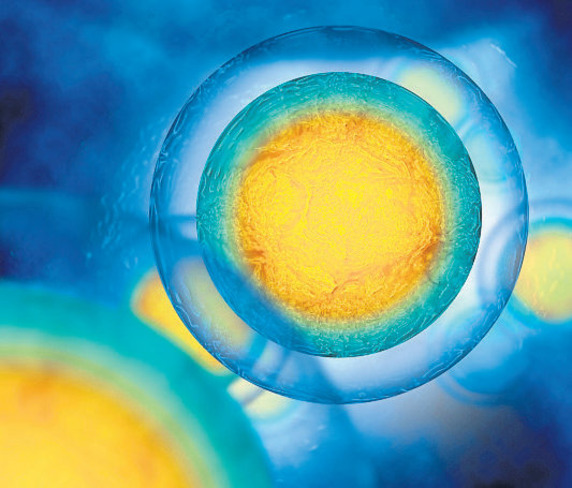The amazing living cell
Dr John Peet explains a little about the complexity of life’s building blocks
Dr John Peet

‘A tornado sweeping through a junkyard might assemble a Boeing 747 from the materials therein.’*
This is how Professor Fred Hoyle, a leading scientist of the 20th century, likened the probability of the evolution of life.
He was both right and wrong! His illustration started with raw materials – God worked ex nihilo! Further, the Boeing airliner was purely mechanical – not living. And the picture now is actually more complicated than he could imagine!
Even Richard Dawkins admitted not long ago that a mindless evolution might not be the explanation of the origin of life. He said: ‘Through the details of biochemistry and molecular biology, we might find the signature of some kind of designer … and that designer could well be a higher intelligence elsewhere in the universe. But that intelligence would have come about by some explicable process.’**
To model the simplest microbe in the world, researchers found that you need 128 computers running for ten hours! And that is not a patch on E. coli! One of the researchers said: ‘I find this fact completely fascinating, because I don’t know that anyone has ever asked how much data a living thing truly holds.’
The mystery of the origin of life
Chemists have been trying for many years to find a way to explain the origin of this ‘chemical factory’. Recently, Professor Keith Fox commented ‘While evolution in en: satisfactorily explains the diversity of the biological world, the origin of life itself is still much more of a mystery, though there are some suggestions out there.’
While we may disagree on some of that statement, he is clearly correct that the origin of life is a mystery. Yes, scientists will try to simulate a possible chemical origin. Of course, being a historical science (trying to simulate a past event), we could never be sure whether any success in this research actually represented the actual process. But we will also propose that it was a process that had to have the hand of the Great Designer in it and it was an ex nihilo event.
It is impossible in an article such as this to cover the detail of the cell’s operations. There are books that cover that. In this brief piece, we will just whet the appetite with some of the detail of what is going on in order to demonstrate the complexity of the cell and that an uncontrolled origin is impossible.
Three major structures
The cell has three major structures: the cell wall, the nucleus and the cytoplasm. The cell wall is critical to hold the components together. It is not a ‘bag’ or a ‘fence’. It has a more detailed structure to fit its purpose. The wall is made up of two layers of lipids and has channels for the movement of chemicals into and out of the cell. But this is a strictly controlled arrangement. These channels have to act as a security system to allow in only the needed raw materials and yet to eject the harmful waste.
The nucleus is the ‘control centre’ of this amazing little chemical factory. For our purposes, we will consider the chromosomes only. These are structures which dictate the distinctives of the host (for example, humans) but also provide instructions or recipes for the metabolic processes inside the cell. This is achieved through the genes that make up the chromosomes. (We will bypass the historical dismissal of vast portions of the chromosomes which have been dismissed as ‘junk’, but are now almost universally recognised to have important functions).
Forwards and backwards
The genes consist of a chemical commonly referred to as DNA, which could be compared to the computer-controlled systems in a factory. Keeping things simple, we note that this is a chemical consisting of four bases linked to a chemical spine. These four bases are the basis of the cell’s instructions and have an amazing potential. The DNA can be imagined to be a recipe consisting of three-letter words which, when read together, give a recipe to produce, for example, proteins. This is a powerful system. One computer expert commented to me recently that this is a system being looked at carefully by IT specialists because it is more powerful than the binary system used in computers at the moment’!
But this recipe is much more complex than that in a cookery book. We are now appreciating that this recipe can be read forwards (as we do in English recipes) or read backwards! Further, it can be read from the middle of the structure. Each giving a different and important result. Don’t try doing that with your cookbook recipes!
There are several important parts in the ‘factory floor’, the cytoplasm which surrounds the nucleus. One such is the mito-chondrion. It has various uses, but one is that it is the ‘power house’ of the cell. The cell uses massive amounts of energy and the mitochondria supply the means for this.
Transport system
When the DNA recipe is being read, it has to be converted to an analogous form (mRNA) which carries the coding out to the cytoplasm and to another structure there, the ribosome. This is the ‘work bench’ where, for example, the many different proteins are produced. These, in turn, have to transferred to other parts of the cell where they will perform their specialist functions. To do this, they have to have a transport system. Yes, that is also there: a complex network of ‘roads’ called microtubules. There are even transport vehicles to carry them to these locations! These are another chemical called kinesin. (There are plenty of video clips on the World Wide Web demonstrating how these operate).
What is the connection then between the DNA code and the proteins? The three-letter ‘words’ on the DNA each relate to another basic chemical, an ‘amino acid’. The recipe identifies the sequence of amino acids needed to form the required protein. There is so much one can say about this fascinating subject, but we must pass over it for now.
This brings us to a couple of other matters. Firstly, how do the amino acids (and other fundamental chemicals and structures) originate? This has been the area to which Professor Fox, above, refers. Chemically it is still a mystery. Then we have to link the amino acids together to form a long chain, the protein. The fascinating aspect of this is that it is very difficult to do in a chemical test-tube. Proteins break down in an aqueous environment. This spontaneous formation of proteins only occurs in a living cell. So how do they form before we have a functioning cell?
We have only considered the amino acid/ protein synthesis. There are many other chemicals that have to be prepared: carbohydrates, phospholipids, nucleotides/DNA, fatty acids and so on. Ultimately, we are left with the ‘chicken and egg’ situation – which came first: the chemicals which need the cell to form them or the cells that can’t exist or operate without the chemicals?
Death and life
Let me finish with an even more basic question. We have referred to living cells. But, we need to appreciate that, if we collect together all the chemical components and place them in a membrane such as a cell wall, it will remain as a lifeless structure. That is what we have when death occurs. So, what is life?
This is again a question that defies an answer, though there are many who would seek to answer it. We come back to that matter to which we referred at the beginning. It is a fundamental belief of Christians that life itself is a gift of God. In Genesis 2.7, we read that ‘the LORD God formed man from the dust of the ground and breathed into his nostrils the breath of life, and man became a living soul.’
* ‘Hoyle on Evolution’, Nature 294(5837):105, November 12, 1981.
** The quotations were taken from the film Expelled: No Intelligence Allowed in which he was interviewed by Ben Stein (2008).


